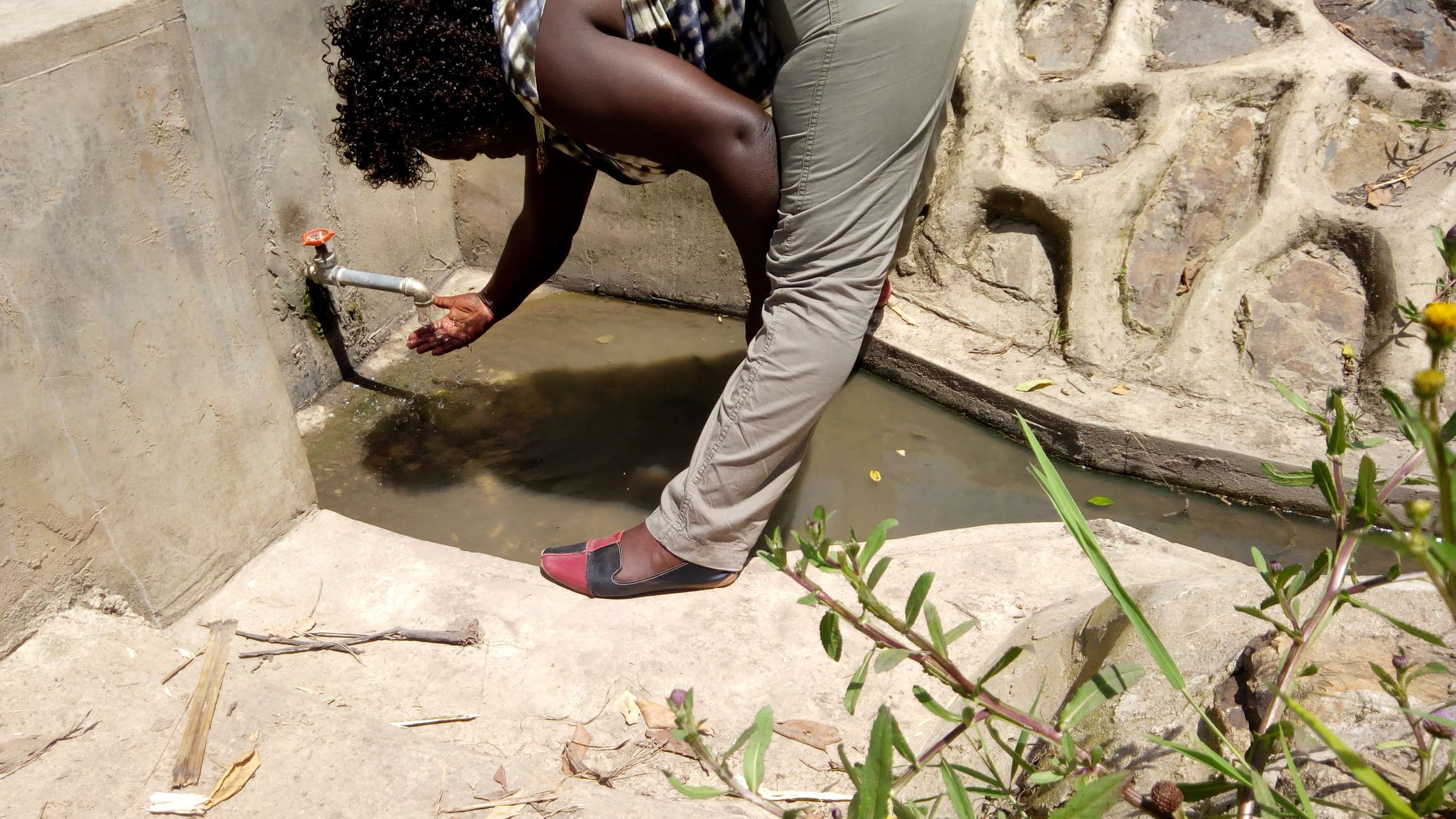This project is a part of our shared program with Western Water and Sanitation Forum (WEWASAFO). Our team is pleased to directly share the below report (edited for clarity, as needed).
Welcome to the Community
This area of Mwiyala is fairly new, with households established by people from other villages who purchased their own plot of land. Most of these work the land to earn a living, waking up early to care for their crops. The adults and children alike are very hardworking.
Water Situation
Benard Kasiani Spring serves over 35 households, totaling 245 people who rely on contaminated water for their every need. These needs include drinking, cooking, washing, and irrigating crops when it doesn't rain.
The spring is unprotected from contaminants, which are primarily washed into the water during rains. Wild animals are also free to quench their thirst at the open waters.
The respondents say that the spring serves many more people during the driest months of the year; as other villages' water sources dry up, Benard Kasiani Spring continues to flow with water. The number of people using the spring increases so much that locals fetch water during the middle of the night to avoid the crowds.
Waterborne diseases like cholera and typhoid are a menace here, reoccurring as a result of using contaminated water from Benard Kasiani Spring.
Sanitation Situation
Sanitation standards are low, for most of the people in this area lack proper latrines, bathing rooms, dish racks, and clotheslines. Less than half of the population has their own pit latrine to use, and the latrines we observed were in pathetic condition and pose danger to their users (wooden logs suspended over the pit rot away). Because of these poor conditions, open defecation is a big issue. People without proper latrines seek the privacy of bushes to relieve themselves, which endangers the rest of the community as contaminants spread.
There are only a few hand-washing stations and other helpful tools like dish racks and clotheslines. Mr. Julius said, "Our current health situation is really detorariating as many people are really suffering not only because they are consuming unclean water but also they lack proper information on sanitation and hygiene, if you take the initiative of visiting each homesteads then you will shed tears on how people are living."
Plans: Hygiene and Sanitation Training
Community members will attend hygiene and sanitation training for at least three days. This training will ensure participants are no longer ignorant about healthy practices and their importance. The facilitator plans to use PHAST (Participatory Hygiene and Sanitation Transformation), CLTS (Community-Led Total Sanitation), ABCD (Asset-Based Community Development), group discussions, handouts, and demonstrations at the spring.
Training will also result in the formation of a committee that will oversee operations and maintenance at the spring. They will enforce proper behavior around the spring and delegate tasks that will help preserve the site, such as building a fence and digging proper drainage.
Plans: Sanitation Platforms
On the final day of training, participants will select five families that should benefit from new latrines.
Training will also inform the community and selected families on what they need to contribute to make this project a success. They must mobilize locally available materials, such as bricks, clean sand, hardcore, and ballast. The five families must prepare by sinking a pit for the sanitation platforms to be placed over. All community members must work together to make sure that accommodations and food are always provided for the work teams.
Plans: Spring Protection
Protecting the spring will ensure that its water is safe, adequate and secure. Construction will keep surface runoff and other contaminants out of the water.
Fetching water is predominantly a female role, done by both women and young girls. Protecting the spring and offering training and support will therefore help empower the female members of the community by giving them more time and energy to engage and invest in income-generating activities.

 Protected Spring
Protected Spring
 Rehabilitation Project
Rehabilitation Project





























